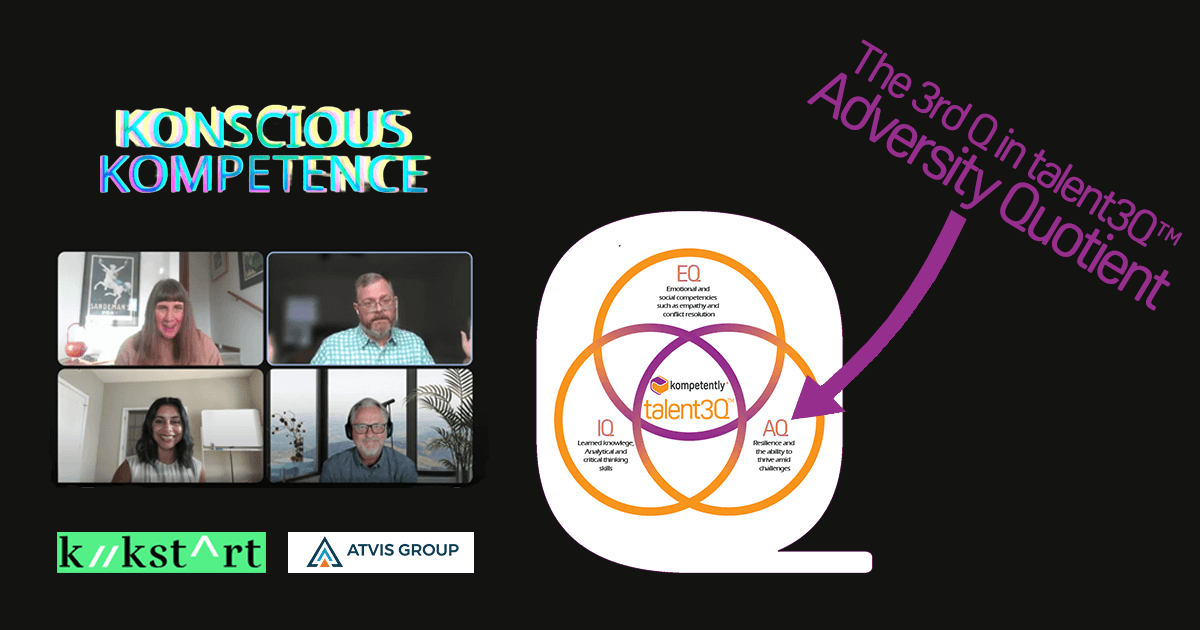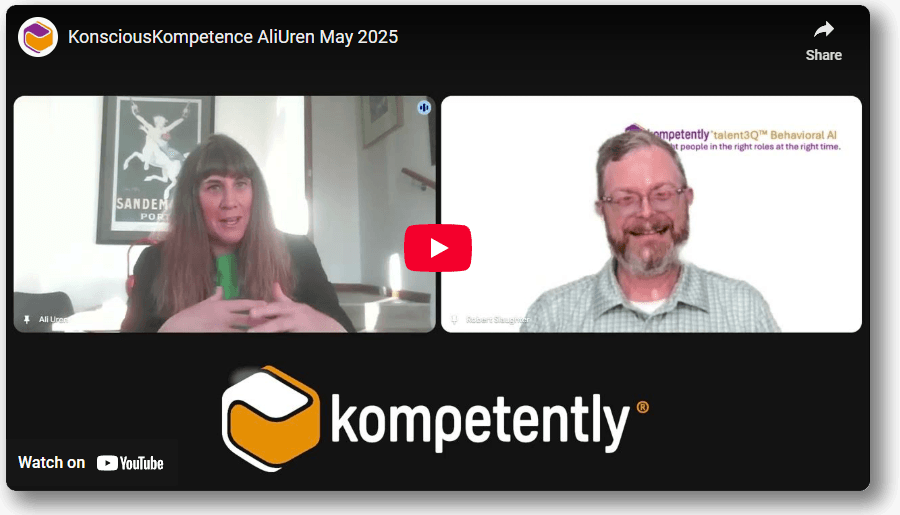Five Steps Toward Building an AI-Friendly Culture
The transformative potential of artificial intelligence (AI) has captured the imagination (and pocketbooks) of many leaders across industries. Organizations are investing heavily in AI initiatives, with the Generative AI (GenAI) market expected to grow at an annual rate of 46%, reaching $356 billion by 2030. Yet, the reality on the ground tells a different story. Fewer than half of digital initiatives meet or exceed business expectations, offering success odds akin to a coin toss.

Guest Blog Post
Malvika Jethmalani, Co-Founder, Atvis Group
Malvika Jethmalani is a 3x CHRO and the Co-Founder of Atvis Group – a human capital advisory firm driven by the core belief that to win in the marketplace, businesses must first win in the workplace.
Malvika’s career has spanned 15 years, and she possesses experience in the consulting, manufacturing, CPG, healthcare technology, and mobile gaming industries. She has led global, distributed People teams across multiple geographies and supported up to 5,000 employees in 50 countries. Her expertise includes HR strategy, talent management, talent acquisition, performance management, and organizational effectiveness. Malvika adopts a data-oriented approach to solving people challenges such as improving employee engagement, reducing turnover, developing leaders, transforming cultures, and developing talent strategies that power sustainable and profitable growth. Having served as Interim CFO and Interim COO, and given her extensive M&A (buy and sell side) and turnaround experience, she brings exceptional business acumen to her HR work.
Accelerating AI Adoption
Building Resilience and Adaptability
This disconnect highlights a critical issue: while technology evolves at breakneck pace, workplace cultures have not kept up. A staggering 67% of organizations adopt new technologies without reimagining how their people work. The result is a predictable impasse: the technology holds promise, but the culture prevents its potential from being realized.
1. Lay a Foundation of Trust
Trust is the bedrock of any successful cultural transformation, yet it’s alarmingly scarce in today’s workplaces. Research shows that only about a third of employees trust their company’s management. Without trust, AI initiatives face apathy or active resistance.
Employees may view AI as a threat – whether to job security, decision-making autonomy, or workplace relationships. Leaders must address these concerns proactively and transparently. What problems is AI intended to solve? How will it enhance employees’ roles? What skills will employees develop along the way to help them propel their careers forward? These are all questions leaders must answer in employee communications. Open and honest communication must also be supported by consistent actions.
For instance, involving employees in the design and rollout of AI projects can shift perceptions. When employees have a hand in shaping how AI is integrated into their work, they are more likely to see it as an opportunity rather than a threat. Trust is not a one-and-done achievement; it requires sustained effort. Leaders must demonstrate integrity, transparency, and empathy throughout the transformation journey.
2. Create a Culture of Experimentation
Innovation demands experimentation, and experimentation comes with inevitable failures. Yet many organizations cling to a risk-averse mindset, stifling creativity. To unlock AI’s potential, organizations must create an environment where trying – and sometimes failing – is not just acceptable but encouraged.
Hackathons, pilot programs, and clearly defined risk frameworks can signal to employees that experimentation is part of the organization’s DNA. Leaders should model this behavior, demonstrating a willingness to iterate and learn from setbacks. This approach not only
3. Foster Psychological Safety
Psychological safety – the belief that one can speak up, share ideas, and take risks without fear of retribution – is a proven driver of team and business performance. In an AI-powered world, it becomes even more critical. AI initiatives often bring uncertainty, and without psychological safety, employees may hesitate to voice concerns, share insights, or propose new use cases for AI.
Creating psychological safety starts with leadership. Managers must actively solicit input, listen without judgment, and act on employee feedback. Importantly, they must also challenge the notion that AI is an external force imposed on employees. Instead, AI should be positioned as a tool that employees can leverage to augment and enhance their work.
Leaders must acknowledge that ideas can come from anywhere in the organization, and diverse perspectives can uncover novel applications for AI. For instance, frontline employees who interact directly with customers may identify opportunities for AI that leadership might overlook. Psychological safety ensures these voices are heard, enabling the organization to harness the full creative potential of its workforce.
4. Embrace Continuous Learning
AI’s rapid evolution demands a workforce that is agile and dynamic, so organizations must prioritize continuous learning to gain and retain a competitive advantage. This starts with a candid assessment of current skills and behaviors. In which areas do leaders and employees excel? Where are the gaps? Which outdated practices and behaviors need to be unlearned? Starting at the very top, leaders in the organization must take an honest and hard look at their organization’s culture to answer these questions. Tools such as Kompetently’s AI-enabled personalized assessments can help leaders take stock of their organization’s current capabilities and identify gaps.
COVID-19 reshaped where and when we work; AI is redefining how. The skills required to do our jobs are expected to change by a whopping 65% by 2030, and learning is the only viable strategy to future-proof an organization against this unprecedented pace of change. Leaders should design tailored learning programs that equip employees with the skills and mindsets needed to thrive in the AI-augmented workplace. From technical AI training to soft skills like adaptability and critical thinking, the focus must be on holistic development.
5. Strengthen Change Management Capabilities
Historically, change management was reserved for major, episodic transformations. Today, it’s a continuous process. However, many organizations are ill-equipped to handle this reality. According to a recent study, 82% of HR leaders report that their managers lack the skills needed to lead change effectively.
Successful change management starts with a clear and compelling vision. Leaders must articulate the “why” behind AI deployment and how it aligns with the organization’s strategic objectives. This vision should be supported by a robust change management strategy that includes communication, training, and employee involvement.
Involving employees as active participants in change efforts – not just passive recipients – fosters a sense of ownership and commitment. Research shows that organizations with effective change management practices achieve higher shareholder returns and improved employee engagement. Managers, in particular, play a crucial role in this process. They must be given the tools and training to rally teams around a common mission, inspire people to do their best work, and foster collaboration as the organization adopts new ways of working.
Staying Ahead in the AI Era
Staying Ahead in the AI Era
One of the most common mistakes organizations make is adopting AI for AI’s sake. Slapping an “AI” sticker on initiatives without clearly defining the business problem they intend to solve is a recipe for failure. These initiatives often start with great momentum and fanfare but quickly lose steam when they fail to deliver meaningful results.
However, defining the business problem is only half the equation. The other half lies in understanding how the organizational culture must evolve. Which behaviors need to change at scale? How can leaders create an environment where employees feel empowered to use AI as a tool for innovation and growth? Building an AI-friendly culture is not a one-size-fits-all process. It requires a deep understanding of your organization’s unique challenges, strengths, and opportunities.
AI’s potential is boundless, but technology alone will not deliver results. Success hinges on the human side of the equation: building trust, embracing experimentation, fostering psychological safety, championing continuous learning, and mastering change management. Organizations that get this right will not only unlock the true value of AI but also position themselves as leaders in a rapidly changing world. The question is no longer whether your organization should deploy AI. The question is whether your culture is ready to support it.
Assess Your AI Readiness
Organizational Adaptability and Resilience Define Your Path to Successful AI Adoption.
In business, staying ahead means embracing transformative technologies like AI. Our AI Adoption Assessment, a comprehensive 12-point diagnostic, is a tool designed for top leaders like you, who are poised to transform your strategies and drive your organizations into the future with AI.






